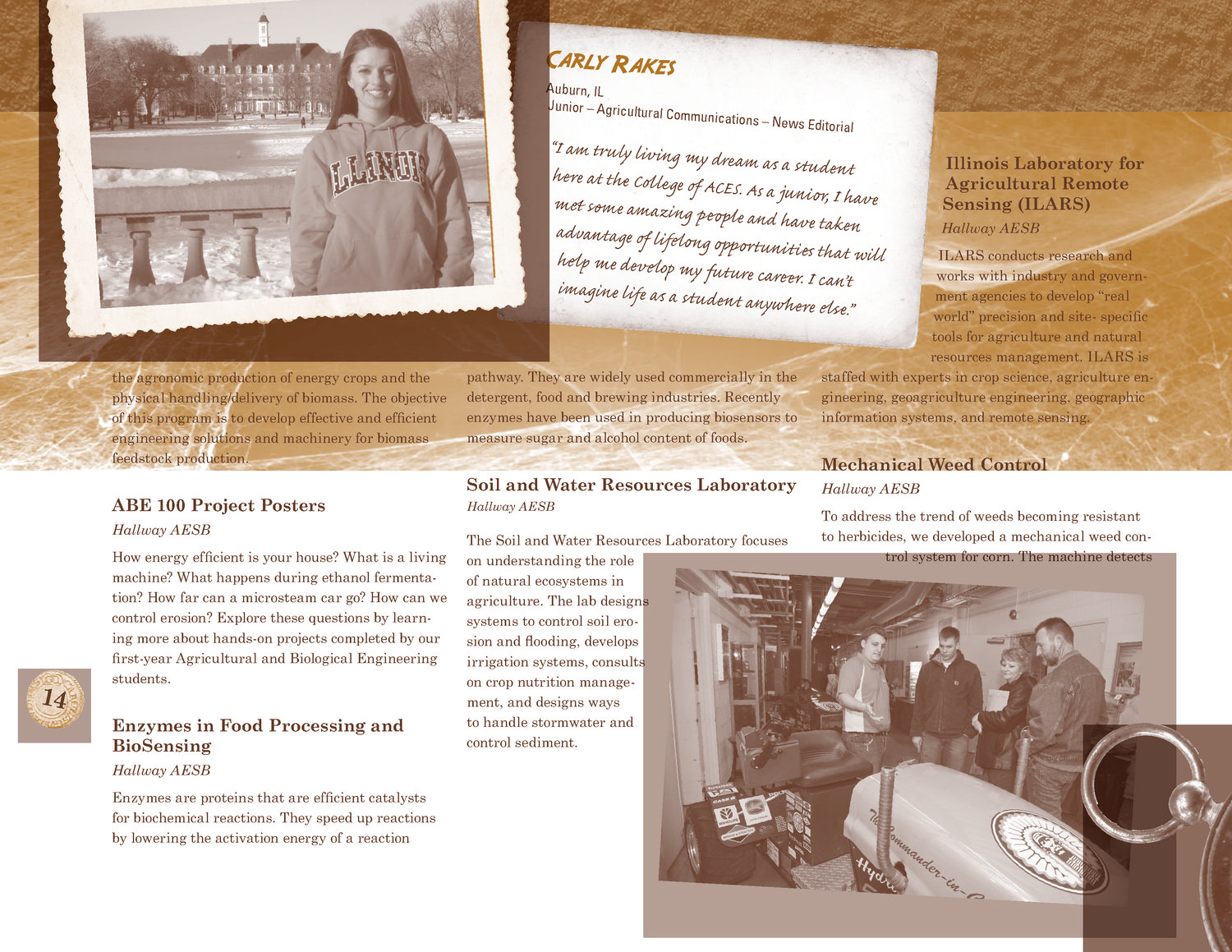Caption: ExploreACES Open House Guide - 2009
This is a reduced-resolution page image for fast online browsing.

EXTRACTED TEXT FROM PAGE:
Carly Rakes Auburn, IL Junior – Agricultur al Communications – News Editorial “I am tru ly li vi ng m y drea m as a st u de n t he re at th e Coll ege of ACES. As a ju n io r, I ha ve m et so m e am azin g pe op le an d ha ve ta ke n ad va n ta ge of li fe lo ng opp ortu n it ies th at w il l he lp m e de ve lop m y fu tu re ca re er. I ca n’t im agin e li fe as a st u de n t an yw he re el se.” the agronomic production of energy crops and the physical handling/delivery of biomass. The objective of this program is to develop effective and efficient engineering solutions and machinery for biomass feedstock production. pathway. They are widely used commercially in the detergent, food and brewing industries. Recently enzymes have been used in producing biosensors to measure sugar and alcohol content of foods. Illinois Laboratory for Agricultural Remote Sensing (ILARS) Hallway AESB ILARS conducts research and works with industry and government agencies to develop “real world” precision and site- specific tools for agriculture and natural resources management. ILARS is staffed with experts in crop science, agriculture engineering, geoagriculture engineering, geographic information systems, and remote sensing. Soil and Water Resources Laboratory ABE 100 Project Posters Hallway AESB How energy efficient is your house? What is a living machine? What happens during ethanol fermentation? How far can a microsteam car go? How can we control erosion? Explore these questions by learning more about hands-on projects completed by our first-year Agricultural and Biological Engineering students. Hallway AESB Mechanical Weed Control Hallway AESB To address the trend of weeds becoming resistant to herbicides, we developed a mechanical weed control system for corn. The machine detects 14 Enzymes in Food Processing and BioSensing Hallway AESB Enzymes are proteins that are efficient catalysts for biochemical reactions. They speed up reactions by lowering the activation energy of a reaction The Soil and Water Resources Laboratory focuses on understanding the role of natural ecosystems in agriculture. The lab designs systems to control soil erosion and flooding, develops irrigation systems, consults on crop nutrition management, and designs ways to handle stormwater and control sediment.
|